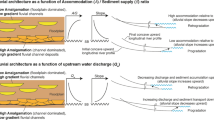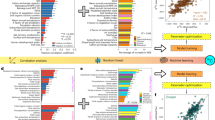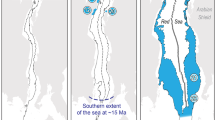Abstract
IN a previous communication1, the carbon-14 dating of an alluvial deposit laid down in Libya after Classical times was reported. Reference was also made to deposits of similar age elsewhere in North Africa.
This is a preview of subscription content, access via your institution
Access options
Subscribe to this journal
Receive 51 print issues and online access
$199.00 per year
only $3.90 per issue
Buy this article
- Purchase on SpringerLink
- Instant access to full article PDF
Prices may be subject to local taxes which are calculated during checkout
Similar content being viewed by others
References
Vita-Finzi, C., Nature, 198, 880 (1963).
Choubert, G., Quaternaria, 6, 170 (1962).
Boulaine, J., Étude des sols des plaines du Chélif, 439 (Algiers, 1957).
Judson, S., Science, 140, 898 (1963).
Vita-Finzi, C., Palestine Explor. Quart., 95 (in the press).
Vita-Finzi, C., Field Studies in Libya, edit. by Willimott, S. G., and Clarke, J. I., 46 (Durham, 1960).
Judson, S., op. cit., 899.
Author information
Authors and Affiliations
Rights and permissions
About this article
Cite this article
VITA-FINZI, C. Synchronous Stream Deposition throughout the Mediterranean Area in Historical Times. Nature 202, 1324 (1964). https://doi.org/10.1038/2021324a0
Issue date:
DOI: https://doi.org/10.1038/2021324a0
This article is cited by
-
Dated Capsian Deposit near Gafsa, Tunisia
Nature Physical Science (1972)
-
Weathering of quartz particles in alluvial red beds
Die Naturwissenschaften (1970)
-
Mediterranean Monoglacialism?
Nature (1969)
-
Stream Deposition in the Mediterranean Area in Historical Times
Nature (1964)



